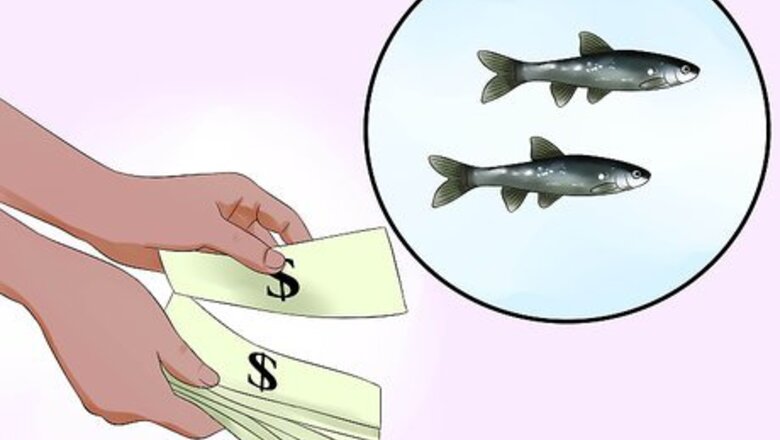
views
Preparing to Get Minnows
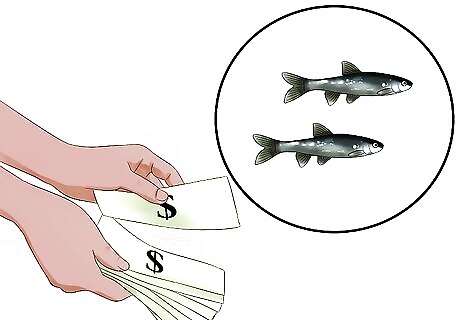
Decide when to purchase the minnows. Minnows do not usually live that long, especially when they are kept in less than optimal conditions. This means that you should purchase them close to the time you plan on going fishing. This can be a problem, however, if you plan on going fishing in the early morning, as many bait shops are not open early enough to accommodate buying minnows on the day you want to go fishing. A bait fish that is kept in poor conditions, such as being overcrowded, can die in less than 24 hours. In order to have your fish last longer, you need to care for them properly. The lifespan of a minnow varies greatly depending on the type of minnow and the conditions it is living in. Fathead minnows and bluntnose minnows, for example, can live several years in a natural environment, such as a pond. There are some minnows that can live as long as seven to ten years. When using minnows for fishing, however, the conditions are less than ideal. This means they are likely to die much, much quicker.

Get a container to put the minnow in. Many people keep minnows in a foam camping cooler or some other disposable, insulated container. However, there are containers that you can buy that are made specifically to keep minnow in. Foam coolers should be available at most grocery stores. Containers made specifically to keep minnow in are usually available at sporting goods stores or specialty fishing stores. Specialty containers can come with a variety of special features, such as the ability to float the container in a body of water and aerator attachments.
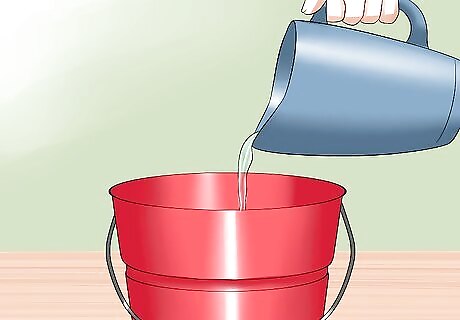
Prepare the container for the minnow. Fill your container with distilled water or water from a lake or creek right before you buy the minnows or quickly after you do. The water should be cold, as the fish need a cool temperature to stay alive. The chemicals in tap water can kill your minnows, so don't use it to keep the minnows in. The container you are using should maintain a constant temperature, helping keep your minnows alive longer.
Acclimating Minnows to a Bait Container
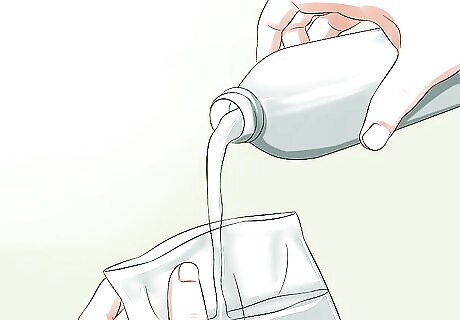
Add some of your water to the water the minnows are held in. Gently pour some of the lake, creek, or distilled water you are using into the plastic bag the minnows came in. This will give them the ability to adjust to the water, and its temperature, gradually.
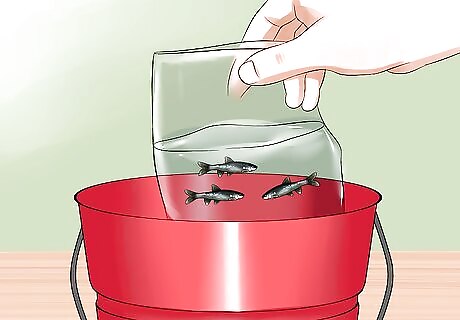
Put the closed plastic bag containing the minnows into your bait bucket. You do not want to simply dump them into your container immediately. Instead, allow enough time for the minnows to adjust to the temperature of the water in your bait bucket. Keep the bag shut and place it into the cooler of water for about 15 minutes.
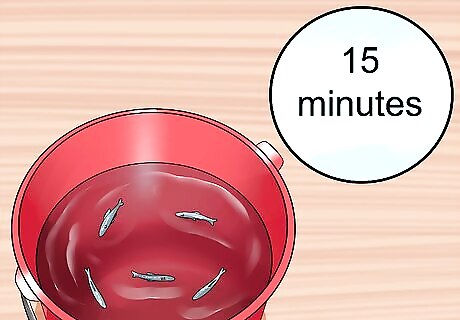
Add the minnows to your holding container. After 15 minutes, allow the minnows to leave the bag and swim freely in the foam cooler or bait bucket. The period of acclimation they went through should allow them to quickly adapt to their new surroundings.
Keeping Minnows Lively
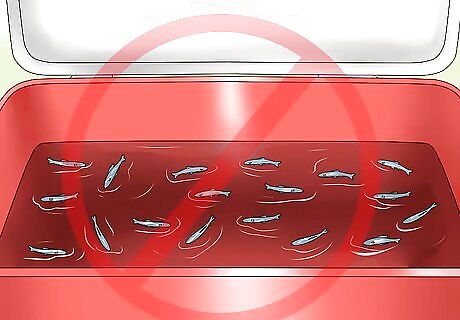
Don't overcrowd your minnow tank. Crowding too much bait into a container can cause the bait to die more quickly. Too many fish will deplete oxygen quickly and create too much heat. For example, only put about six dozen small minnows (3/4' to 1" long) in an eight-quart container.
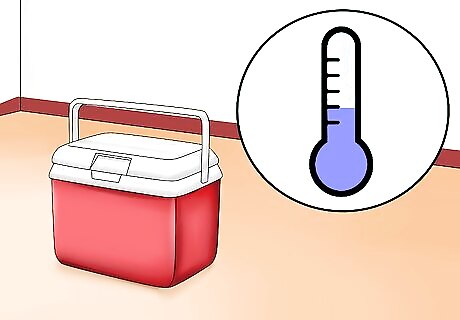
Store the container in a dark, cool spot. For example, you can store your bait container in a closet or a basement. Minnows are delicate and thrive better in cooler water. The water will warm up too quickly if you keep the cooler in a bright area.
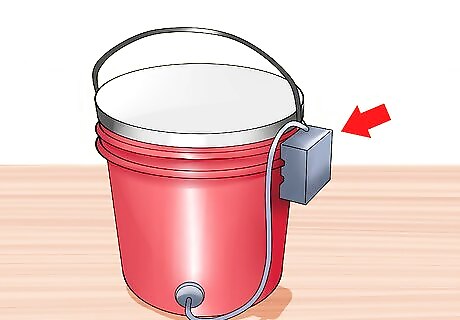
Put an aerator in the container. An aerator will add oxygen to the water so that the minnows don't use it up and suffocate. This is especially important if you need to keep the fish for a day or two, and if you don't plan on switching out the bait container water often. Those that sell minnows commercially usually use an aeration system that oxygenates their water in one of two ways: agitation or compressed oxygen. An aerator can help to increase the lifespan of your minnow. This is due to the fact that other ways of aerating the water, such as adding additional water or adding hydrogen peroxide, can stress the fish immensely. With an aerator, the minnows get to simply stay in the water that you have already acclimated them to.
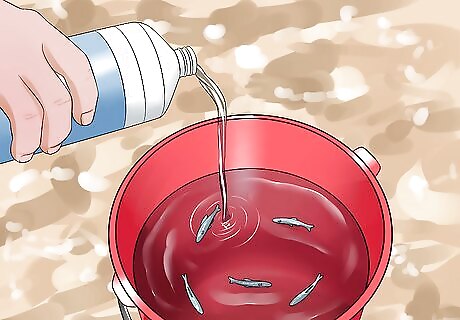
Pour a small amount of hydrogen peroxide into the cooler if you do not have an aerator. You only want to add one ounce of three percent hydrogen peroxide solution for every three gallons of water. The hydrogen peroxide assists in the formation of oxygen in the water, replacing oxygen that is used up by the fish. You can also add more distilled water as necessary to refresh the minnows' water. Adding hydrogen peroxide to water is a controversial idea. Some people believe that it helps to oxygenate the water and won't hurt fish but others argue that it could kill fish easily. If you are unsure or apprehensive about adding it to your minnow's water, find an alternative, such as an aerator or changing the water frequently.
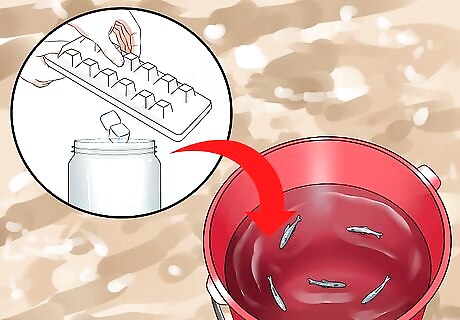
Keep the water cool. Place ice cubes in a jar in the water that's inside the bait bucket to keep it sufficiently cool for the minnows. Repeat this as often as necessary to keep the water cool. Although minnows can survive in warm water, the rate of death increases dramatically once holding water is above 60 °F (15.6 °C). Try to keep your water below this temperature. Don't add ice directly to the water the minnows are in. The ice may contain small amounts of chemicals or chlorine that will kill the fish.
Keeping Minnows Alive While Fishing
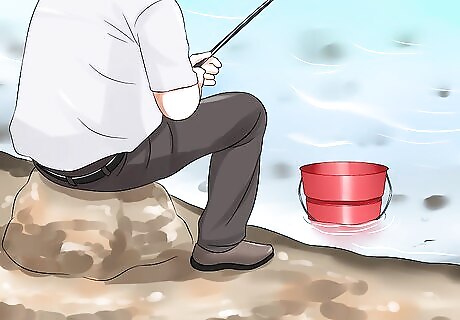
Immerse the bait bucket into the lake or creek where you are fishing. You can either do this by placing the container on the edge of the water, where it sits in the water but doesn't exchange water, or you can use a container that allows the water from the body of water to flow in and out of the container without losing fish. This will help the bait acclimate to the temperature of the body of water you are fishing in. Placing your bait bucket into the lake or creek, so that the water is replaced, oxygenates the water, which also helps keep the minnows alive.

Attach the minnow to the hook. Pick a minnow to place on your hook and decide how you will attach it. There are several schools of thought about what way is best to connect the minnow. Make your decision based on what is the best combination of keeping the bait alive and how the attachment allows the bait to move in the water. Through the mouth: Push the hook through the fishes' bottom lip up through the nostrils. Through the back: Hooking a minnow through the back allows the minnow to be in a more natural position in the water. This may be more effective for catching fish.
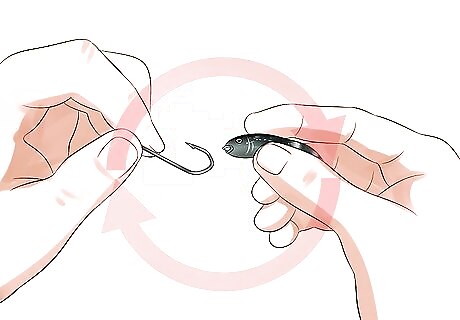
Be prepared to replace minnows. Once you have put a minnow on a line, no matter what way you have done it, it will die relatively quickly. If it stops moving in the water, it is a much less effective bait than when it was alive. Because of this, it's best to replace minnows on your hook after they die. The rate at which minnows die varied dramatically depending on their health when you put them on the hook and the conditions in the water. Just be aware when you are recasting whether the minnow seems to be alive still or not.




















Comments
0 comment